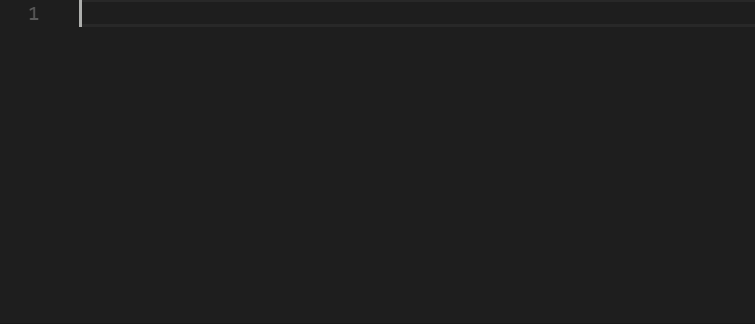


- #Visual studio code snippets edit existing how to#
- #Visual studio code snippets edit existing full#
- #Visual studio code snippets edit existing mac#
- #Visual studio code snippets edit existing windows#

I'm going to hit save on this file and because I've uncommented now I can have access to it in my javascript files so if I see right here I have a description of this snippet which is print to console.
#Visual studio code snippets edit existing full#
I want to use babel and so if I open that up you can see that it has a full set of instructions already here for meĪnd the default one is actually pretty cool so I'm going to get rid of this comment here and so get rid of that entire example and the ending comment tag.Īnd what it does is it actually gives you this default example that you can use as your own personal guide for creating your own snippets and it's called print to console. So if I start typing in JavaScript it gives me a few different options so it gives me javascript react and then javascript babel. This is something that I really like about VS Code because it makes it very easy to organize each one of your code snippets specifically by language. The key is you want to go to user snippets and from here this is going to pop up a dialog box and it's going to ask you to select a language for this snippet that you want to create.
#Visual studio code snippets edit existing windows#
If you are on a Windows or Linux machine then you're going to have a similar but just slightly different looking interface.
#Visual studio code snippets edit existing mac#
If you're on a Mac you can come up to the top left-hand side where it says code right here and then go to preferences and then user snippets. So now let's walk through and see how you can do this inside of your own system. So I can save this file and now I have access to the full set of HTML5 features.
#Visual studio code snippets edit existing how to#
This is something I added myself and I'm going to show you exactly how to do that and I'm even going to show you how to do it in multiple programming languages so I no longer have to go and type all of this code out from scratch every time I want to use the full HTML5 boilerplate.

Now, this is something that is not directly built into the text editor. So if I hit return this is going to generate the entire HTML5 boilerplate code. So right here I have an HTML5 file open and for me to use a code snippet I simply have to start typing out the keyword and it's called a prefix that I set my custom user snippet up to be.Īs you can see I simply started typing H and now it automatically is recommending the HTML5 snippet that I created. And before we get into how to create a custom code snippet let's first look at how they work inside of the editor itself. If this helps even a single person that did not know this before, then the post was worth it.If you have never worked with code snippets before I think you're really going to like them. Maybe all of you already know this and just laugh about this post, then that’s okay. Here is a picture of the setting that you need to change. By default, this setting is set to “inline”.Īfter changing that Snippet Suggestion setting to bottom, the order of my suggestions made more sense. So i checked the settings and found a setting that is called Snippet Suggestions. Unfortunately, it is at the bottom of this suggestion list. The first suggestion I would expect is the suggestion “var”. When I hit Ctrl + Space to activate IntelliSense, the first suggestions are all snippets that do not make sense in this situation. I have an OnAfterValidateTrigger and want to see the suggestions inside the brackets. Picture tell more than words, so I will show you an example. Five minutes ago I was annoyed by Visual Studio Code’s default behavior when it comes to IntelliSense in combination with snippets.


 0 kommentar(er)
0 kommentar(er)
